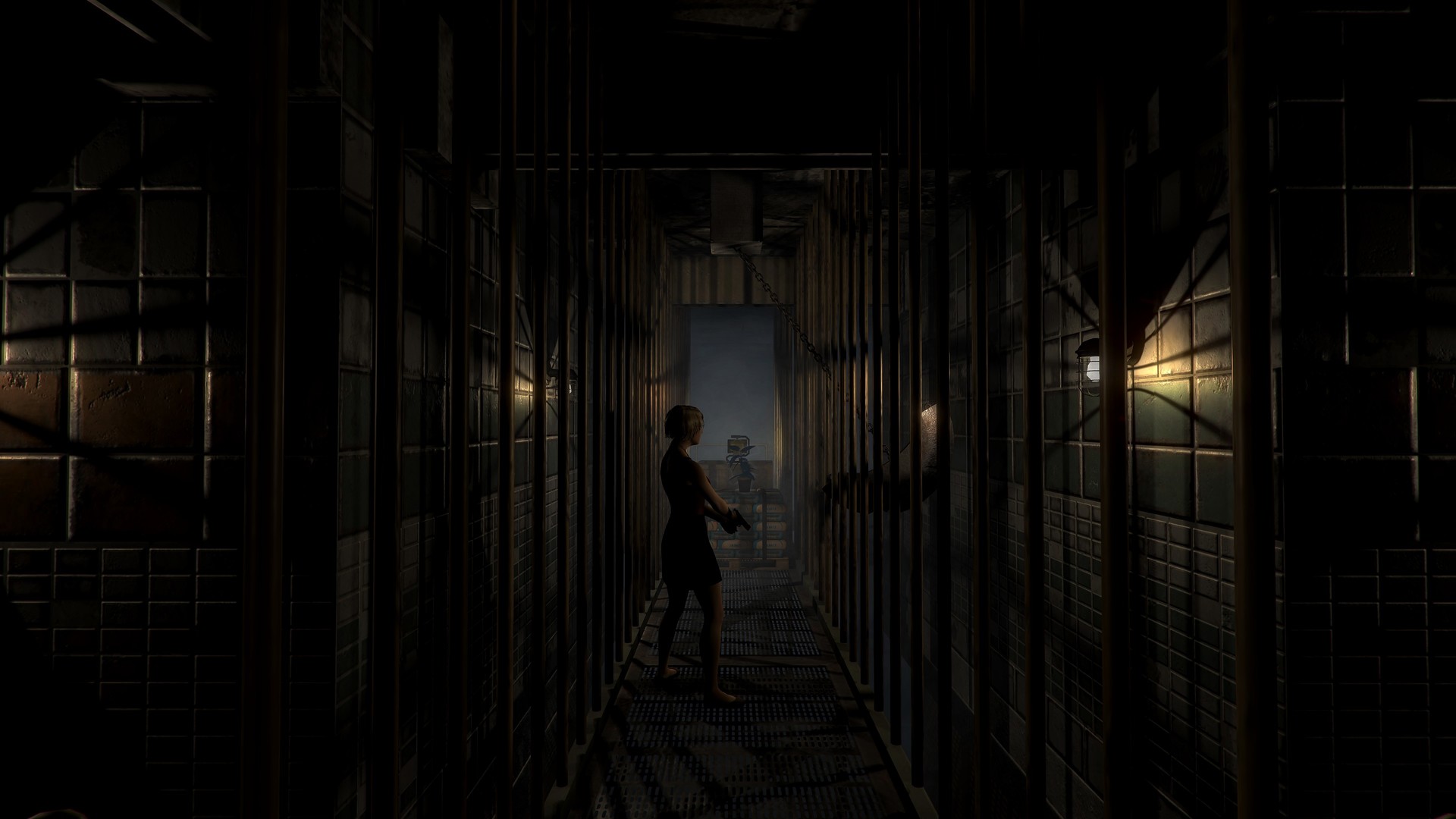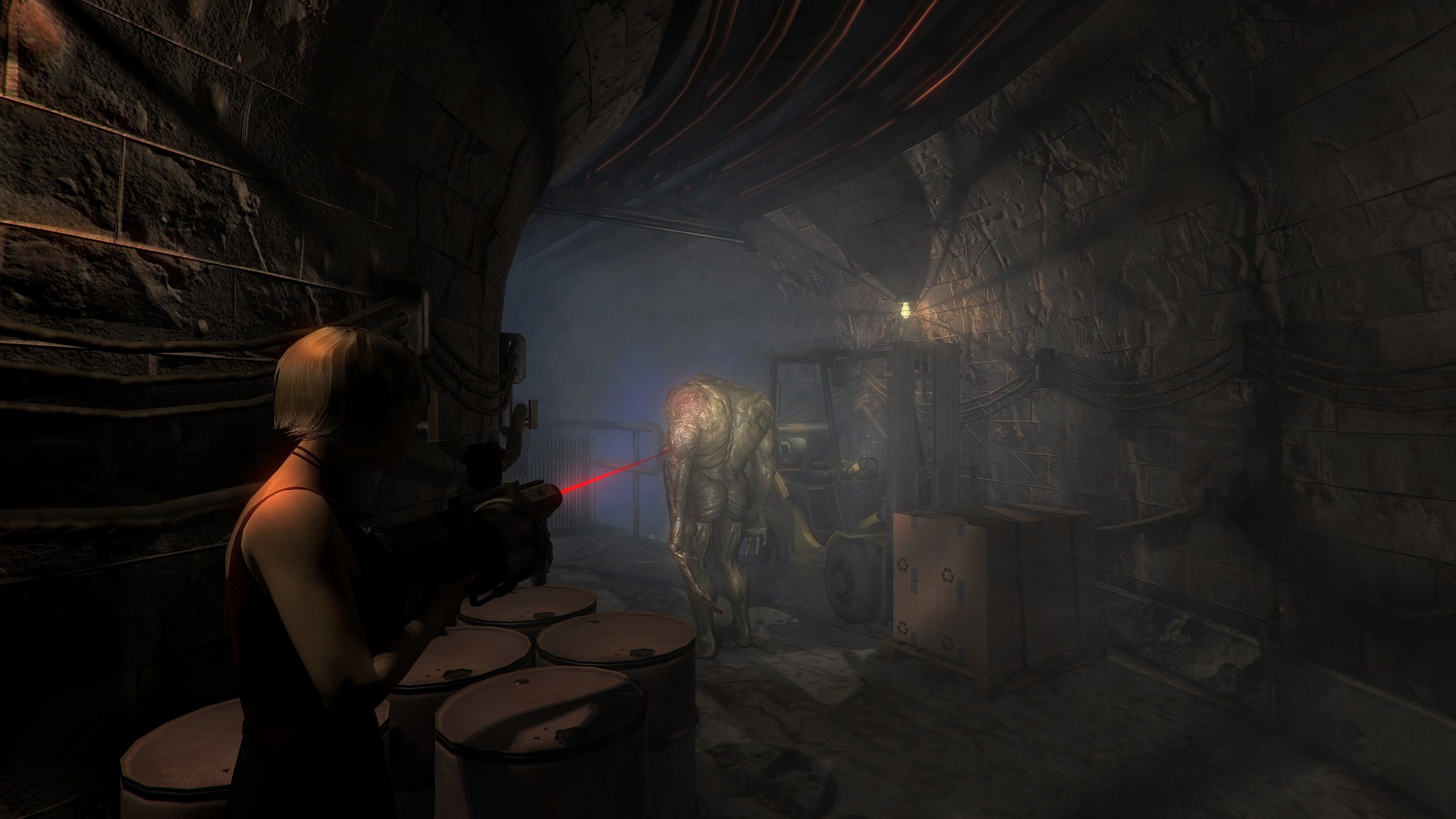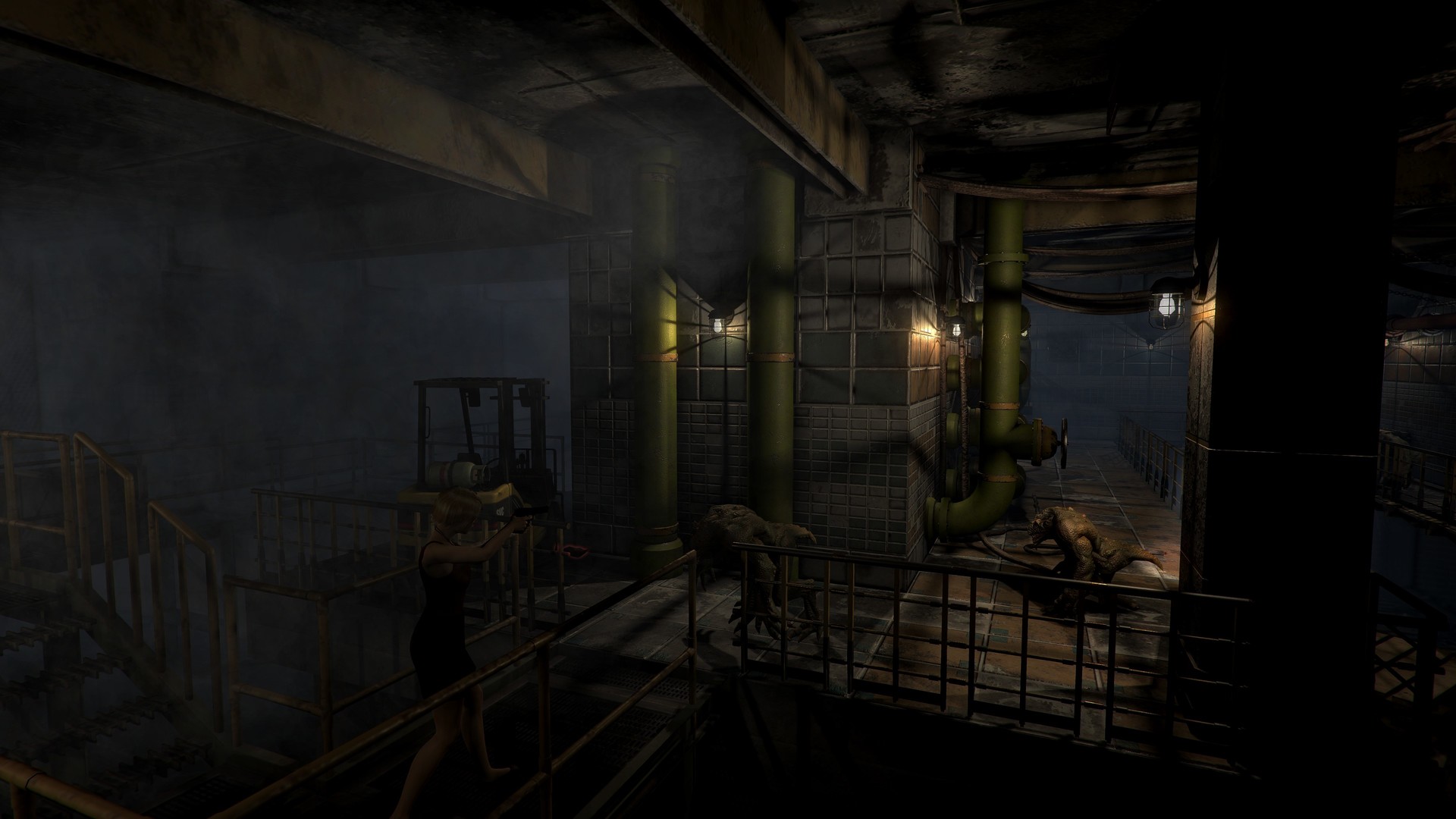
Survival horror games that call back to the genre’s roots are quite rare; those that do so and are good, rare still; those that do so, and are good, and do it with a twist of their own, even more so. Indie series Outbreak, however, has been consistently and quietly delivering solid classic survival horror experiences for some time, and the recently released Outbreak: Endless Nightmares is looking to keep that going, by mixing its core mechanics with a new roguelike loop. It’s a fascinating blend, and to learn more about the game and its development, we recently reached out with a few questions to solo developer Evan Wolbach. You can read our conversation below.
"I’ve always been a huge fan of classic survival horror gameplay since the 90’s, but I discovered roguelikes only recently. Titles like Enter the Gungeon and Rogue Legacy just absolutely captivated me with the ease of their pick-up-and-play gameplay, while also encouraging you to keep trying each time you die to get a little further. I realized that classic survival horror gameplay, like intense inventory management, character growth, etc would mesh very well with that gameplay loop."
Congratulations on the launch of Outbreak: Endless Nightmares! How has reception from players been for the game so far?
Thank you! The reception from players has been fantastic so far. This has been the largest launch in the series history by a huge margin, with more players than ever before. Classic survival horror fans have had a very positive reaction to the classic fixed-camera gameplay, and we’ve received awesome feedback that has led to a series of updates on most platforms to further enhance the over-the-shoulder and first-person gameplay. The rogue-like gameplay loop seems to really resonate with people as well! I’m very pleased with the player response to this title and it’s clear folks want classic survival horror experiences.
Mixing survival horror gameplay with roguelike elements is a very interesting concept, and it’s one that makes more sense the more you think about it. How did that idea first come about?
I’ve always been a huge fan of classic survival horror gameplay since the 90’s, but I discovered roguelikes only recently. Titles like Enter the Gungeon and Rogue Legacy just absolutely captivated me with the ease of their pick-up-and-play gameplay, while also encouraging you to keep trying each time you die to get a little further.
I realized that classic survival horror gameplay, like intense inventory management, character growth, etc would mesh very well with that gameplay loop. Over 18 months, I kept iterating on the formula and eventually found that by expanding the loot and crafting system that appeared in earlier Outbreak games, while also keeping persistent character progression, it turned into an extremely fun experience. And that’s how the title was born.
Outbreak: Endless Nightmare also adds co-op gameplay. Was its addition, and even the roguelike elements for that matter, something that came about in response to feedback for previous entries?
Many titles in the Outbreak series have featured co-op. Outbreak, Outbreak: The New Nightmare and Outbreak: Epidemic feature online co-op on Steam, and offline co-op on all platforms. I always loved the classic Resident Evil: Outbreak gameplay where you could bring friends along to the survival horror nightmare, and it just felt natural to me to allow players to bring a buddy. It was really important to me that both players had access to their full character, upgrades, inventory, etc… so they are equal players and can experience the entire game together. And this is absolutely based on player feedback – one of the most common things fans have told me is how much they’ve enjoyed the co-op in earlier entries, so I wanted to make sure it appeared going forward.
There’s still a very clear influence here from classic survival horror games of the fixed cameras era, but it also has options for switching to first person and third person. How much of a challenge was that to pull off, especially in terms of balancing the experience across all three styles?
When I originally started on Outbreak: Endless Nightmares, it was intended to be a fixed-camera only title. But after seeing the positive responses to Outbreak: Lost Hope and Outbreak: Epidemic, which featured over-the-shoulder gameplay, as well as the many fans asking for a first-person view, it just felt natural to see if I could integrate them as well. In testing, they felt fun and gave me the opportunity to hide items and other secrets that were only visible in certain views, to help encourage folks to keep changing it up. I also wanted to make them homages to other classic survival horror titles, like Resident Evil Survivor, which featured FPS gameplay with classic survival horror controls.
In the original launch release of Outbreak: Endless Nightmares, OTS & FPS still used the classic survival horror gameplay, which made them feel rigid. Immediately at launch, folks began asking for free look and expanded controls in these views, like strafing. I’m happy to report that we have patches deploying in the next week or two on most major platforms to include these improvements requested by players, along with a ton of other enhancements, bug fixes and performance improvements.
With these updates, I feel that these different view modes are now on equal footing to the classic fixed camera gameplay and folks can now experience this title in the way they prefer most.
"When I originally started on Outbreak: Endless Nightmares, it was intended to be a fixed-camera only title. But after seeing the positive responses to Outbreak: Lost Hope and Outbreak: Epidemic, which featured over-the-shoulder gameplay, as well as the many fans asking for a first-person view, it just felt natural to see if I could integrate them as well."
Procedural generation is obviously great for replayability, but it can often lead to sacrifices in things like level design. What sort of an approach did you take for Outbreak: Endless Nightmare in that regard?
The most important design decision I made was not making the levels fully procedurally generated. I made sure the locations themselves had fixed landmarks, and tailored traps and enemies to ensure the gameplay experience remained challenging but fair. But virtually everything else about the experience can change and that helps keeps players on their toes. You never know what traps or locations you’re going to encounter, but once you play through a few loops, you’ll be able to identify landmarks to help keep you on track. That kind of semi-procedural generation also allowed me to tailor camera angles to ensure you can always see just enough of the play space to get everything you need, while also ensuring some secrets are hidden.
Was there ever a concern that the procedural generation aspect could dull the impact of things such as puzzles, which are so integral to the survival horror experience?
This was a major concern for me, which is why I didn’t opt for full procedural generation. Each time you encounter a puzzle, it was placed there intentionally (even though you may not encounter it again for quite some time) so that it’s always completable and the play space remains fair. I really tried to mix those tried-and-true survival horror puzzle experiences, with enough randomness and unique elements to always keep you on your toes.
As a solo developer, how would you describe the experience of working on Outbreak: Endless Nightmare, which is clearly a quite ambitious project and has so much going on?
It’s all about making a plan. Over the 18-month development cycle, I tried to space out each piece of the project and have an overall strategy for how it’s going to be implemented and integrated into the whole. The game was constructed in pieces, such as the hub area, the separate anomalies, the loot system, the crafting system and everything else going on. I determined the initial gameplay loop, built locations, discovered how to create the semi-procedurally generated elements, then built the remaining systems around it. If you don’t approach it with a plan, the whole of the project can become overwhelming and never materialize.
What are your plans for supporting the game post-launch in terms of updates and additional content?
We have a year of content and updates planned so far for the title, which we’ll be sharing in about two months. You can expect frequent patches, integrating community feedback, to address bugs and other gameplay balancing. We actually have the first set of patches deploying to most major platforms right now to add improved OTS and FPS controls, improve performance and fix a lot of the smaller issues reported by players. That process will continue, and in time additional content for the game will also come for folks. I’d really like to see the title continue to grow considerably.
"The most important design decision I made was not making the levels fully procedurally generated. I made sure the locations themselves had fixed landmarks, and tailored traps and enemies to ensure the gameplay experience remained challenging but fair. But virtually everything else about the experience can change and that helps keeps players on their toes."
Since the reveal of the PS5 and Xbox Series X’s specs, a lot of comparisons have been made between the GPU speeds of the two consoles, with the PS5 at 10.28 TFLOPS and the Xbox Series X at 12 TFLOPS- but how much of an impact on development do you think that difference will have?
They’re both awesome machines, and with the latest game update rolling out to PS5 and Series X, the game runs at almost a flawless 60 FPS. I don’t think either really has an edge in regards to this title, but the game has benefitted massively from their GPUs, CPUs and of course the SSDs. I was able to push texture and shadow quality quite high on those platforms, improve the viewing distance and get load times down to a second or two in most cases thanks to that new hardware. Those systems are some of the best places to play the title if you want to experience it with all the bells and whistles!
The PS5 features an incredibly fast SSD with 5.5GB/s raw bandwidth. This is faster than anything that is available out there. How can developers take advantage of this, and how does this compare to Series X’s 2.4GB/s raw bandwidth?
These SSDs are so important to games and game developers going forward. They are able to take most load times, which typically could be 30 seconds to a minute in many cases, and shrink them down to just a few seconds (or less!). And that’s without any optimization or additional tailoring to the platform. The CPU and GPU in these new consoles are incredible, but the SSD is really the key to improving the quality of life for players going forward as it just cuts out all of the waiting. I’m really happy that the console manufacturers have gone in this direction.
There is a difference in the Zen 2 CPUs of both consoles. The Xbox Series X features 8x Zen 2 Cores at 3.8GHz, whereas the PS5 features 8x Zen 2 Cores at 3.5GHz. Your thoughts on this difference?
At the end of the day, I think this difference will not mean too much to game developers and gamers. It’s important to note that these CPUs are such a tremendous leap over the very limited CPUs that appeared in the prior generation, that these small differences in clock speeds really pale in comparison to the massive leap overall from the prior generation. You’ll likely see one platform outperform another with multi-plat titles, but I expect to see that trading off across both machines and not landing solely on one platform. Both CPUs are awesome and the experiences they’re going to open up for games in the years ahead will be tremendous compared to the limitations of the prior generation.
The Xbox Series S features lesser hardware compared to Xbox Series and Microsoft is pushing it as a 1440p/60fps console. Do you think it will be able to hold up for the graphically intensive next-gen games?
I think it will do well in a general sense, but the most important aspect of targeting that platform is keeping the screen resolution reasonable (I opted for 1080p for additional performance), while also tailoring graphics like dynamic shadow quality and distance for that type of machine. Larger developers and publishers will have the bandwidth to really tailor their products to that machine and I expect we’re going to see it doing very well over the next couple of years with the titles slated to come out.
"Super Resolution will have a massive impact. Targeting 4K as a native resolution is extremely demanding, even on this super high-end hardware. Having mechanisms to reconstruct the frame and make it look virtually identical to native 4K, while paying a far lower cost in performance, will be massive."
Super Resolution is coming to PS5 and Xbox Series X/S. How do you think this will help game developers?
It will have a massive impact. Targeting 4K as a native resolution is extremely demanding, even on this super high-end hardware. Having mechanisms to reconstruct the frame and make it look virtually identical to native 4K, while paying a far lower cost in performance, will be massive. With those savings, you can focus more on improving graphics quality, particle budgets, etc… and still reap almost all of the rewards that come with a native 4K image. It’s really exciting technology and I can’t wait to use it!
What frame rate and resolution is the game targeting on PS5 and Xbox Series X and S?
On PS5 and Series X, the game runs at native 4K when Quality Mode is selected in environments where it won’t greatly impact the framerate. Otherwise, Quality Mode and Performance Mode will fall back to 1080p to ensure the framerate remains steady on those platforms. The first round of patches that are currently in the process of releasing on both of those platforms further improve performance while ensuring native resolution can stay at 4K when possible.
Series S targets 1080p/60FPS and does a pretty good job of hitting it much of the time in many scenes. It’s really a great machine and folks who play Outbreak: Endless Nightmares on it will still get a meaty next-gen experience!


















